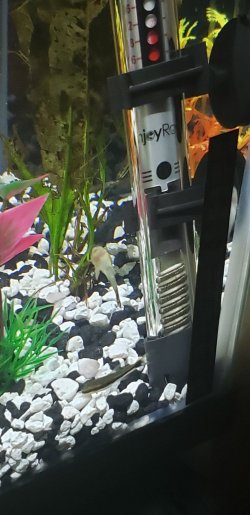despreauxb
Fish Fanatic
So I have a 20G high tank and I think I want some gouramins or ram. I want fun active fish and looking for stocking advice. I do have hard water with a ph Around 7.6. I also have a single dalmatian Molly I plan on moving into the tank as well.
Side note: I have a 10G long with 4 Cory catfish (I think) and plan on getting a beta, would that be okay?
Side note: I have a 10G long with 4 Cory catfish (I think) and plan on getting a beta, would that be okay?


